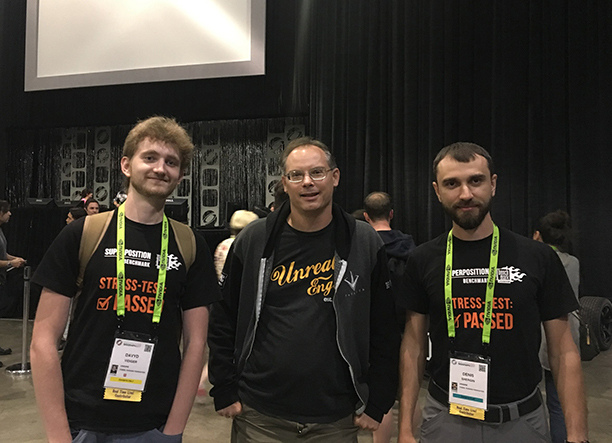SIGGRAPH 2017: UNIGINE at Real Time Live!
This year UNIGINE took part in the SIGGRAPH, one of the world’s major and the most influential events in 3D graphics and interactive technologies, in Los Angeles. The usual part of conference is Real-Time Live!, the international technology contest that showcases the latest trends and techniques for pushing the boundaries of interactive visuals. This year the new SSRTGI technique developed by UNIGINE was selected by expert jury to be presented at Real-Time Live!.
SSRTGI (Screen-Space Ray Tracing Global Illumination) is the brand new lighting effect, that makes interactive real-time rendered environment look photorealistic using the ray tracing algorithm that’s close to the real physics.
Ordinary screen-space effects, such as SSAO and SSGI, do not treat objects as obstacles for light rays. Thus, they are not able to provide real looking lighting simulation, producing only a rough
imitation instead. But SSRTGI provides real 180°ray tracing for each pixel in the scene with a fixed number of steps per ray to define occlusions.
This ray tracing technique provides Ambient Occlusion with more realistic shadows between the objects, the use of Bent Normals helps to reduce the noise and smooth borders of shadows, while Global illumination recreates light reflections from object’s surface. These effects working together provide an incredibly realistic lighting and shadow play simulation for real-time interactive rendering.

UNIGINE’s Team demonstrated SSRTGI lighting technology to the thousands of people at the Real-Time Live!. The new lighting technique created for Superposition Benchmark was highly acclaimed by the industry experts as an elegant solution for one of the most challenging problems in real-time 3D graphics.
New Screen-Space Ray-Traced Global Illumination (SSRTGI) is already integrated in UNIGINE SDK 2.5.